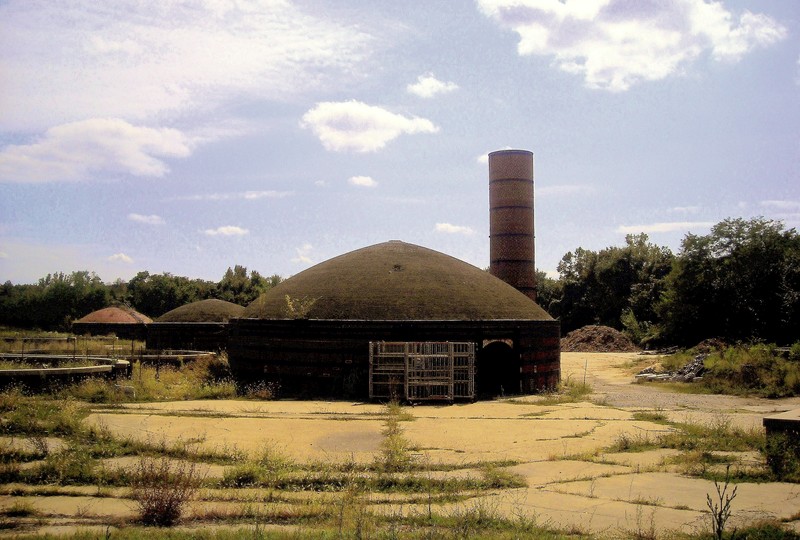United Brick Company Ruins
Introduction
Text-to-speech Audio
Images
Kiln by AgnosticPreachersKid on Wikimedia Commons (CC BY-SA 3.0)

Backstory and Context
Text-to-speech Audio
At the turn of the twentieth century, around 100 brickyards operated in the capital, supporting a multitude of building projects. This facility excavated clay from the Anacostia Deposit on the river of the same name for brick production. The National Capital Clay Products Company received a building permit for the construction of a factory with kilns in June 1909. The company originally built rectangular kilns sometime after 1910. The title of the factory changed hands several times; subsequent owners were the District Tile and Brick Company, Hudson Brick and Supply Company, and then the United Brick Corporation in 1930.
Production expanded at the brickyard with the construction of nine beehive kilns between 1927 and 1931. The circular kilns are built of brick, lined with firebrick. Their arched roofs were covered in tar, now deteriorated and weed-filled. Coal fireboxes accompany ten of the kilns. These are now infilled, demonstrating the brickyard's change in fuel from coal to oil. Three of the twelve beehive kilns on the site were built more recently than 1931, and two of them lack fireboxes, indicating their construction was after the change in fuel. Also of note on the site are eight exhaust stacks and a factory building with a drying shed.
After World War II, the brickyard business dwindled due to the increase in use of ferro-concrete in construction and a large-scale consolidation across the brick industry. Washington Brick Company and West Brothers Brick Company were the United Brick Corporation's major competitors. Beehive kilns were too small to accommodate forklifts for efficient stacking and moving of bricks, and could not be fired continuously as opposed to tunnel kilns. This site closed in the 1972. The United States of America acquired the site in 1976, in the care of the Department of Agriculture. It is maintained by the National Arboretum, and the National Register of Historic Places recognized the site in 1978. Plans to restore and renovate the site for public use have gone unrealized.
Sources
Jacobson, Dorthy L. Washington, DC SP United Brick Corporation Brick Complex, National Archives. March 22nd 1976. Accessed June 10th 2020. https://catalog.archives.gov/id/117692574.
WhiskeyBristles. United Brick Corporation Ruins, Atlas Obscura. Accessed June 10th 2020. https://www.atlasobscura.com/places/united-brick-corporation-ruins.
https://commons.wikimedia.org/wiki/File:Brick_Complex,_New_York_Avenue.jpg
